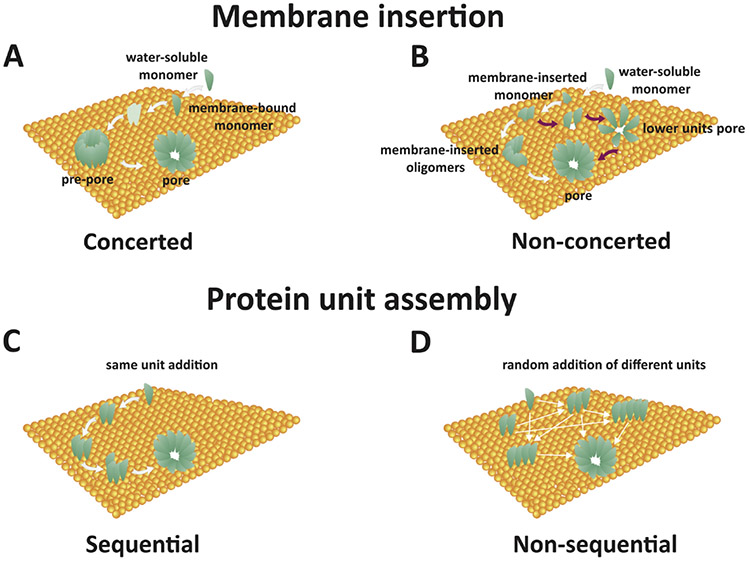FIG. 1:
Four proposed mechanisms of pore forming protein assembly: (a) Concerted: Water-soluble monomers bind to the membrane with subsequent oligomerization yielding a pre-pore ensemble that then penetrates the membrane; (b) Nonconcerted: Water-soluble monomers bind to the membrane surface and either insert into the membrane immediately as detectable partial pore complexes or assemble entirely and then insert; (c) Sequential: Water-soluble monomers bind to the membrane surface and combine in units of fixed molecularity followed with insertion; and (d) Nonsequential: Similar to all other steps, oligomerization is seeded by an individual water-soluble monomer adsorbing to the membrane surface followed by random addition of molecular units (monomers, dimers, trimers, etc.) to form a stable pore for insertion. (Reprinted with permission from Elsevier, Copyright 2016.23)

